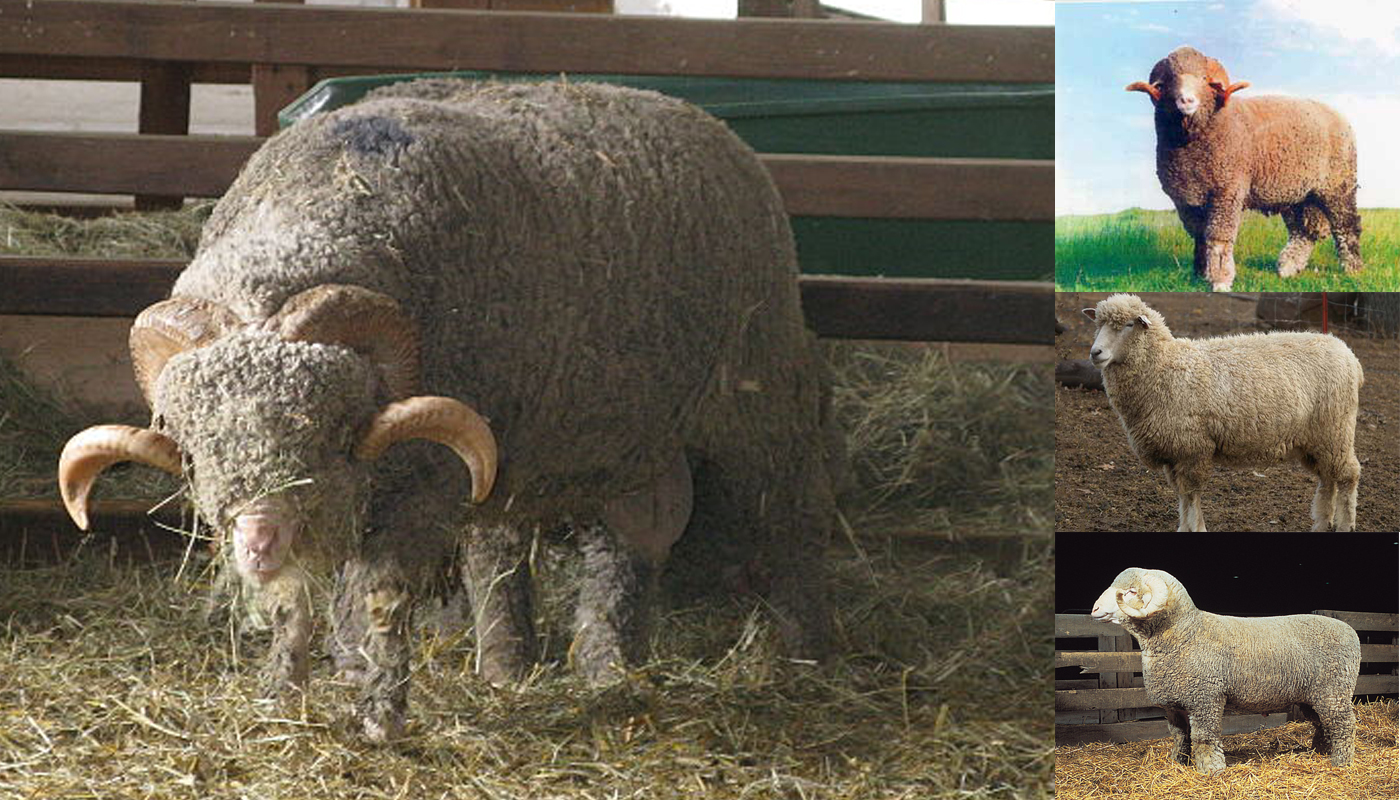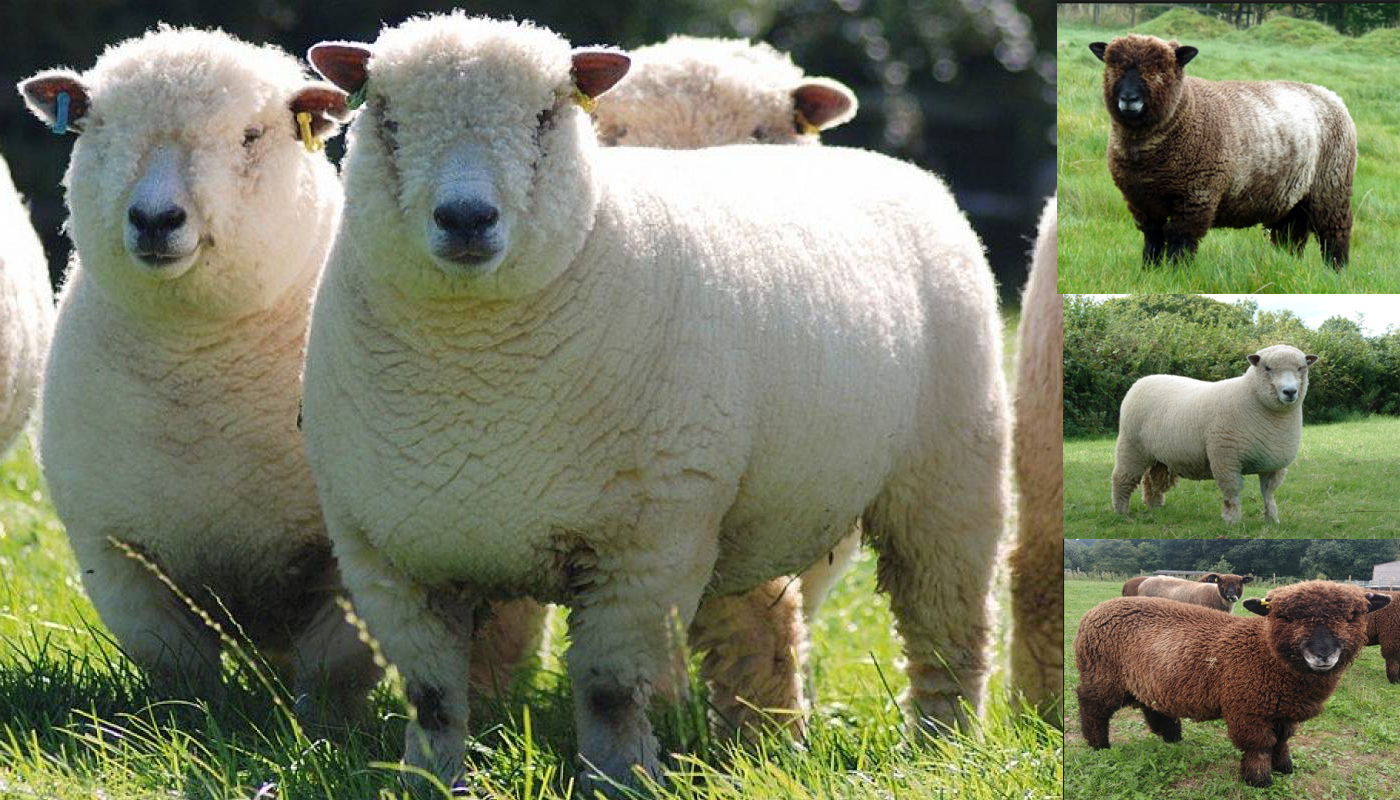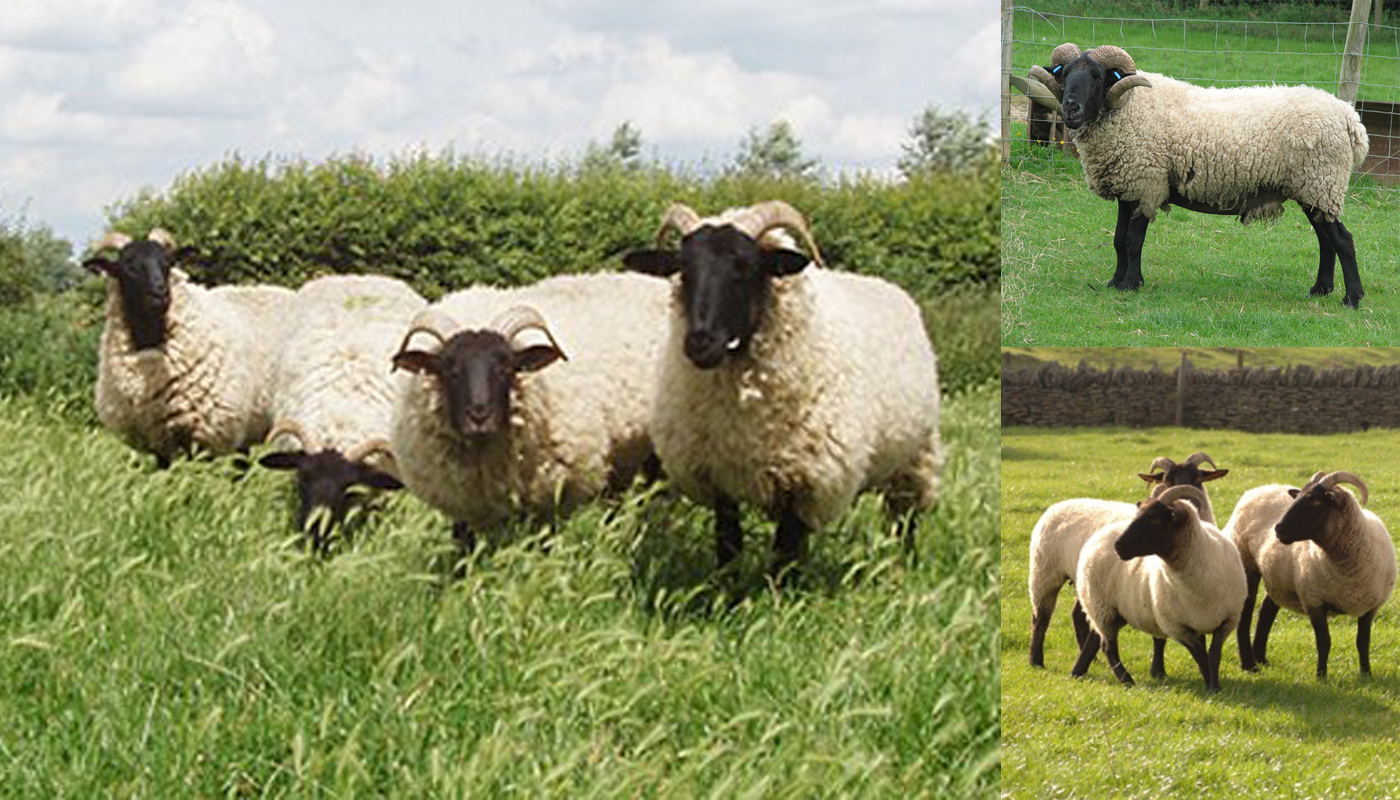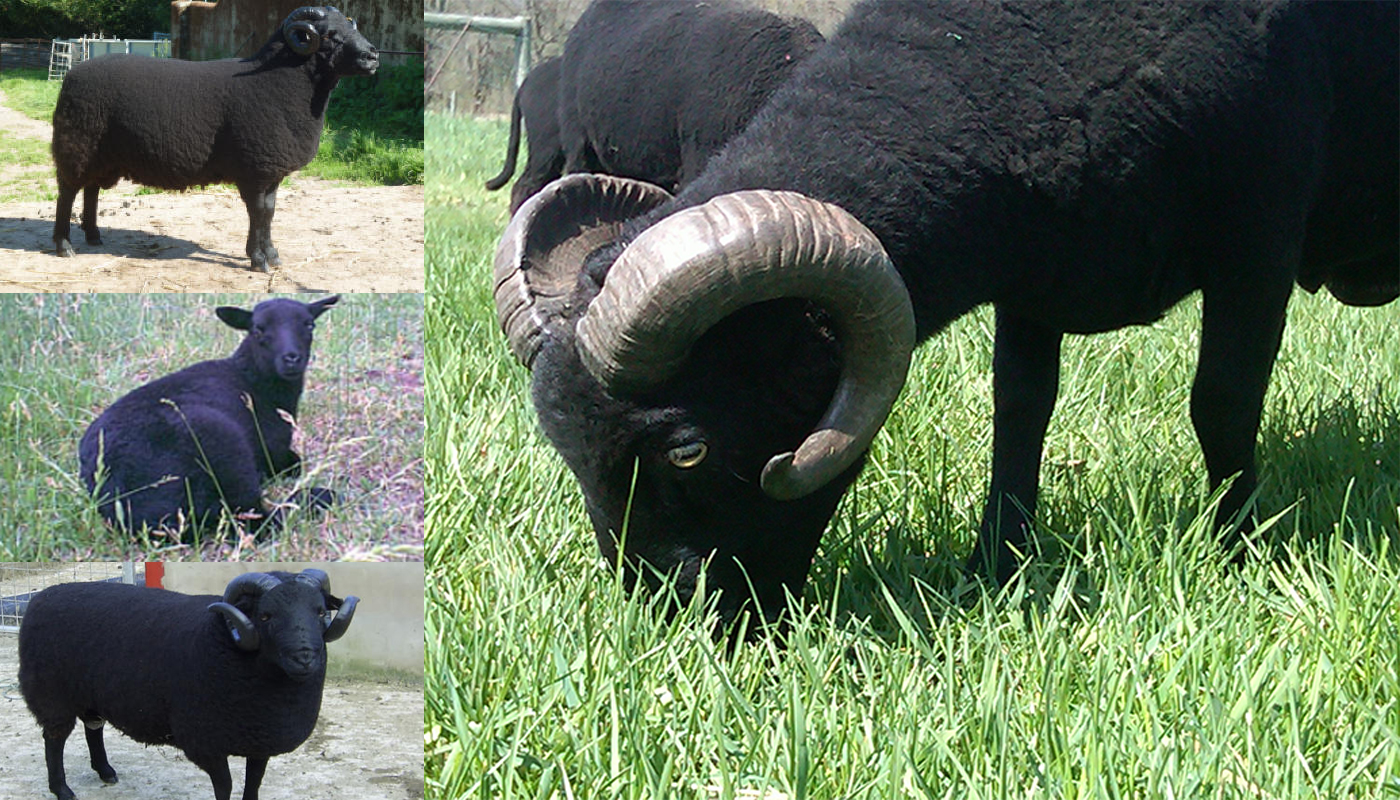
The Shropshire sheep are a medium to large sized sheep with a good fleece of wool all over their sturdy long and compact bodies. They have black faces which wool tends to grow over making them look like they have wooly masks on.
They are raised for the delectable meat quality and also for the good wool production. They originated from the wind swept hills of Shropshire in England in around the 1840’s.
SHROPSHIRE SHEEP QUICK PROFILE OVERVIEW |
|
|---|---|
| The Shropshire sheep are sturdy, hardy with along lean body and black faces. | |
| Country of Origin: | United Kingdom |
| Other Names: | None |
| Breed Size: | Medium to large |
| Main Purpose: | Meat and wool |
| Can be used for | Breed, **LSC, Meat, Wool |
| Temperament: | Docile and inquisitive |
| Ideal Climate: | Heat, Cold, Most climates |
| Conservation Status: |
Listed by the *ALC Status/Rarity: Watch. |
| Health Issues? | No known health issues |
| Good Starter Sheep? | Novice to intermediate level of sheep farmer/keeper |
| Sheep Associations: | American Shropshire Registry Association and Shropshire Sheep Society |
| Sheep Clubs: | Please refer to the American Shropshire Registry Association and Shropshire Sheep Society for more information |
| Note: *ALC stands for American Livestock Conservancy ** LSC stands for Landscape Management – the animal is used for controlling various vegetation growth |
|
PHYSICAL CHARACTERISTICS |
||||||||||||||||||||||||||||||||
|---|---|---|---|---|---|---|---|---|---|---|---|---|---|---|---|---|---|---|---|---|---|---|---|---|---|---|---|---|---|---|---|---|
| They are a sturdy medium to large sized breed of sheep with a long body and medium length legs. They have brown/dark faces, ears and legs. | ||||||||||||||||||||||||||||||||
| Color(s): | White | |||||||||||||||||||||||||||||||
|
||||||||||||||||||||||||||||||||
EWE BREEDING & MILKING INFORMATION |
|
|---|---|
| The ewes breed once a year and mostly produce enough milk to wean their lambs. | |
| Breeding Period/cycle: | Usually lasts 24 to 36 hours |
| Estrous cycle: | Ave. 17 days/13 to 19 days |
| Gestation Period: | Usually, around 150 to 155 days but most gestation is 152 days |
| No. Lambs/Litter: | 1 to 2 lambs per season |
| Lactation Period: | Usually, around 150 to 240 day but most are milked for 180 days |
| Milking From: | 4 to 6 weeks after lambing |
| Milk Quality: | Good |
| Milk Ideal for: | Lambs |
| You may Also Like: | 10 Best Sheep Breeds for Milk |
SHEEP MEAT PRODUCTION INFORMATION |
|||||||
|---|---|---|---|---|---|---|---|
| They are purposely bred for the fine meat quality. They were bred to the butchers quality standards and requirements for a lamb with a good carcass and excellent eating quality and taste with minimum wastage. The lambs grow relatively fast and they have a good dress percentage. They have a highly muscled carcass producing a lean flavorful meat. | |||||||
| Meat Production: | N/A | ||||||
|
|||||||
| You may Also Like: | 11 Best Sheep Breeds for Meat Production | ||||||
SHEEP WOOL PRODUCTION INFORMATION |
||||||||||||||||
|---|---|---|---|---|---|---|---|---|---|---|---|---|---|---|---|---|
| Their wool has a good quality fiber and is a medium grad wool with a springy quality to it. They are part of the “downs” group of sheep. Their wool has a 50 to 70 percent yield of the total fleece weight. | ||||||||||||||||
| Wool Production? | Yes, Quality: Medium grade with a spinning count of 54s to 56s | |||||||||||||||
| Wool is used to Produce: | Hard wearing items such as mittens, socks and hats. | |||||||||||||||
|
||||||||||||||||
| You may Also Like: | 18 Best Wool Producing Sheep Breeds | |||||||||||||||
SHEEP SKIN PRODUCTION INFORMATION |
|||||||
|---|---|---|---|---|---|---|---|
| They are not primarily bred for their sheep skin production. Although their skin is or has at some time been used for the production of some form of sheep skin product such as chamois, etc. | |||||||
| Skin Production? | N/A | ||||||
| Skin is used to Produce: | Kid skin leather products such as shoes, car seats, fine leather coats, gloves, etc. Chamois cloths, leather goods such as seats, shoes and other garments and leather materials such as furniture, etc. |
||||||
|
|||||||
GOOD TO KNOW ABOUT THE ROMNEY SHEEP |
|
|---|---|
| A few more interesting facts to know about the breed | |
| Child-Friendly? | No livestock should be left unattended around unsupervised children |
| Landscape Management? | The do well in managing bush and grassland |
| Where to buy them? | Please refer to the American Shropshire Registry Association and Shropshire Sheep Society for further details |
| General Information: | Due to its gentle and calm nature the Shropshire sheep breed is rising in popularity in the US. They are being used more and more for 4-H exhibitors which are youth exhibitors. |
HISTORY
The Shropshire sheep breed originated on the Shropshire Downs of England. They sheep have been said to have been in this region since as early as 1341.
There were reported 10000 native Morse Common sheep in the Shropshire Downs area as reported by the Royal Agricultural Society in 1792. This was a breed of Black faced sheep that were native to the area. They were small, horned sheep which were known as “the pride of Shropshire”. They have either brown or black spotted faces and a superior wool quality. Other breed were then crossed with this breed to create the sheep breed the Shropshire breed. However, the breed was not named Shropshire until 184.
In 1855 the Shropshire sheep breed was imported to America for the first time and the American Record Association was founded in 1884. The American Record Association is now the American Shropshire Registry.
The Shropshire breed of sheep was a very prominent and important sheep breed in the United States right up until the 1930’s.
Video
USEFUL LINKS
- United States Lamb Resource Center
- American Sheep Industry Association
- American Sheep Industry Association List of Breed Associations & Standards
- American Milk Sheep Association
- Dairy Sheep Association of North America
- American Wool Council
- Fur Commission USA
- North American Meat Institute
- American Lamb Board
- National Lamb Feeders Association
- American Livestock Conservancy
- Animal Shelter (ASPCA)
- American Veterinary Medical Association
- American Animal Welfare Society
- American Animal Control
- American Animal Husbandry Society
- United States Department of Agriculture
 Rambouillet Sheep Breed – Everything You Need to Know
Rambouillet Sheep Breed – Everything You Need to Know Ryeland Sheep Breed – Everything You Need to Know
Ryeland Sheep Breed – Everything You Need to Know Clun Forest Sheep Breed – Everything You Need to Know
Clun Forest Sheep Breed – Everything You Need to Know Norfolk Horn Sheep Breed – Everything You Need to Know
Norfolk Horn Sheep Breed – Everything You Need to Know Polypay Sheep Breed – Everything You Need to Know
Polypay Sheep Breed – Everything You Need to Know Barbados Black Belly Sheep Breed – Everything You Need to Know
Barbados Black Belly Sheep Breed – Everything You Need to Know Black Welsh Mountain Sheep Breed – Everything You Need to Know
Black Welsh Mountain Sheep Breed – Everything You Need to Know Merino Sheep Breed – Everything You Need to Know
Merino Sheep Breed – Everything You Need to Know Top 20 Best Native British Sheep Breeds
Top 20 Best Native British Sheep Breeds Lincoln Sheep Breed – Everything You Need to Know
Lincoln Sheep Breed – Everything You Need to Know 10 Best Sheep Breeds for Milk
10 Best Sheep Breeds for Milk North Country Cheviot Sheep Breed – Everything You Need to Know
North Country Cheviot Sheep Breed – Everything You Need to Know